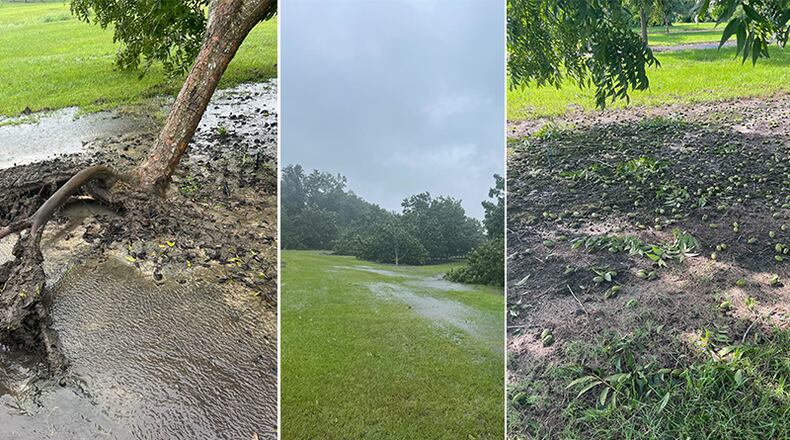As the scope of damage that Hurricane Idalia caused in South Georgia comes into focus, the U.S. Department of Agriculture (USDA) has now expanded its disaster declaration in the state to include 27 primary counties.
The move comes just over two months after the storm made landfall in Florida’s Big Bend Region as a Category 3 hurricane, before pushing into South Georgia. The storm was still packing sustained winds of 90 mph as it moved through Georgia, uprooting thousands of pecan trees and leaving fields of cotton a twisted mess.
In the days after the storm, Georgia Gov. Brian Kemp asked President Joe Biden to issue a presidential disaster declaration for 30 affected counties. On September 7, Biden declared a disaster in three of the hardest-hit counties — Cook, Glynn, and Lowndes — allowing those harmed to apply for temporary housing and home repair assistance, plus low-cost loans to help cover property losses.
The new USDA declaration unlocks assistance specifically for affected farmers in a much wider swath of the state and allows them to apply for emergency disaster relief through the federal Farm Service Agency.
The 27 primary counties covered by the declaration are: Appling, Atkinson, Bacon, Ben Hill, Berrien, Brantley, Brooks, Bulloch, Candler, Clinch, Coffee, Cook, Echols, Evans, Irwin, Jeff Davis, Lanier, Lowndes, Montgomery, Pierce, Tattnall, Telfair, Thomas, Toombs, Ware, Wayne and Wheeler counties.
Farmers in another 20 counties that surround the primary disaster area are also eligible to apply for emergency loans. Those counties are: Bryan, Camden, Charlton, Colquitt, Dodge, Effingham, Emanuel, Glynn, Grady, Jenkins, Laurens, Liberty, Long, McIntosh, Mitchell, Screven, Tift, Treutlen, Turner, and Wilcox counties.
Growers have eight months to apply for the assistance.
In a statement, Georgia Agriculture Commissioner Tyler Harper thanked the USDA and said his agency would continue working with its federal, state and local partners to help farmers rebuild.
“Hurricane Idalia caused significant damage to agricultural operations across South Central and Southeast Georgia, and I am glad to see that USDA has expanded their initial disaster declaration to include these additional counties,” Harper said.
The full extent of damage to crops and farms in Georgia is still being calculated by the Farm Service Agency and the University of Georgia (UGA). But the losses are expected to be steep: The 27 counties in the primary disaster area are home to over 7,800 agricultural operations, whose products have a farm-gate value of over $3.5 billion, the Georgia Department of Agriculture says.
Vance Hiers, who grows pecans in Brooks County — an area west of Valdosta that is covered by the disaster declaration — said the storm toppled about 5,000 of his pecan trees. Idalia’s strong winds knocked about half of the nuts out of his remaining trees, leaving him with barely 20% of his normal annual crop and an enormously costly mess. Hiers estimates he’s spent $500,000 just to remove downed trees, not to mention the crop losses.
In the days after the storm hit, Hiers said he and his family seriously considered cutting their losses and getting out of the business. Now, he said he plans to apply for federal assistance and try to rebuild his farm.
“Looking back at it ... nobody died and nobody got hurt on our farm,” he said. “All it means is we’ve just got to rebuild. That’s it.”
A note of disclosure
This coverage is supported by a partnership with 1Earth Fund, the Kendeda Fund and Journalism Funding Partners. You can learn more and support our climate reporting by donating at ajc.com/donate/climate/
About the Author
Keep Reading
The Latest
Featured



